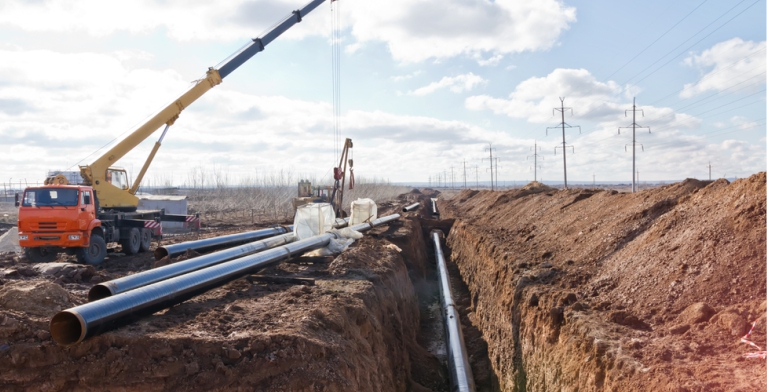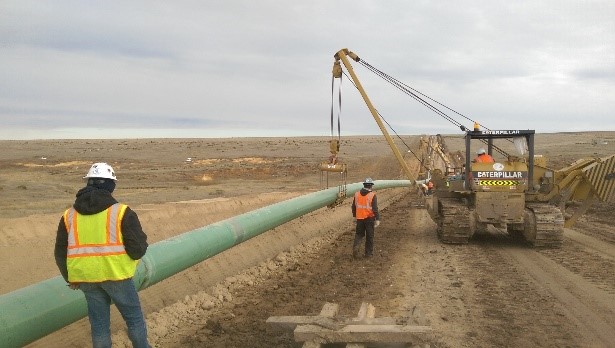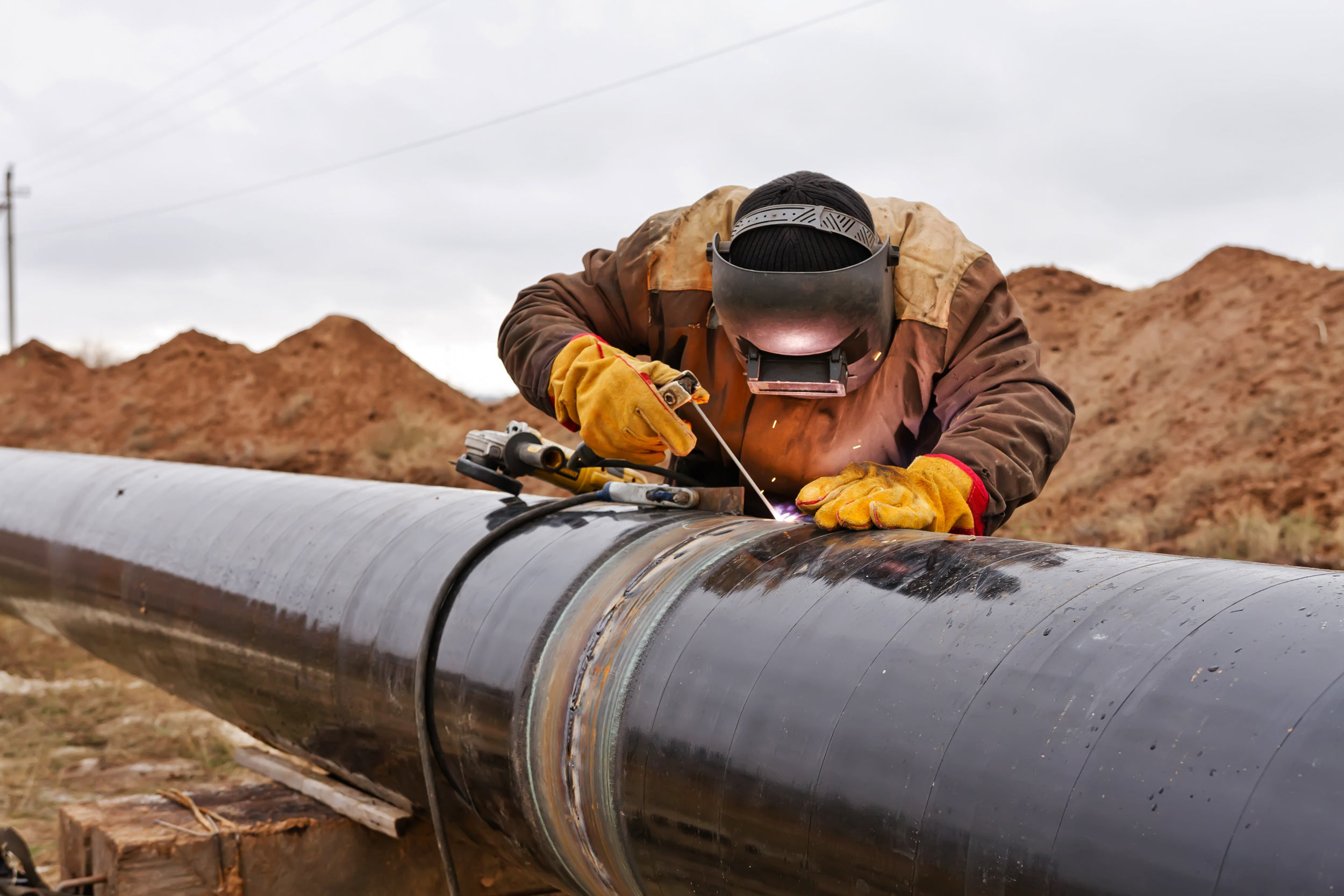When to Call For Immediate Help From Creek Pipe trenching services
Wiki Article
Understanding the Basics of Pipes Installation: What You Required to Find Out About the Process
Correct pipe installation is crucial for any type of pipes system. It calls for careful factor to consider of numerous variables, including material selection and adherence to neighborhood policies. A tactical format can stop problems like stress loss, while the right devices ensure effective joining strategies. However, even experienced installers can make common errors. Comprehending these essentials can bring about an extra efficient and resilient system, prompting a better check out the vital components included in the process.Picking the Right Materials for Pipe Installation
When considering pipe installation, the option of ideal products is crucial to making sure toughness and functionality. Different products are readily available, each offering unique advantages and considerations. PVC pipes are lightweight, immune to corrosion, and cost-efficient, making them excellent for household plumbing. Conversely, copper pipes, known for their durability and capacity to stand up to high temperature levels, are often preferred for home heating systems.Additionally, galvanized steel pipelines offer stamina and resilience, suitable for heavy-duty applications, although they are prone to rust over time.For below ground setups, polyethylene pipes are preferred because of their flexibility and resistance to tension breaking. Appropriate material choice depends on the certain requirements of the job, consisting of pressure rankings, temperature variations, and the chemical nature of the liquids being transferred - Creek Pipe pipeline construction. Eventually, informed selections relating to pipe products contribute significantly to the overall success and durability of pipes systemsComprehending Local Building Regulations and Regulations
How can understanding local building codes and regulations influence pipe installation? Experience with these codes is necessary for making certain that pipe setups are risk-free, compliant, and reliable. Local structure codes lay out certain needs regarding products, installation methods, and precaution, which have to be complied with to avoid potential lawful problems and pricey fines.Failure to comply can bring about assessments being failed, delays in task completion, and even mandated removal of poorly mounted pipes. Additionally, comprehending zoning regulations and guidelines can influence the sort of products enabled, in addition to the techniques utilized for installation.Contractors and homeowners alike must spend time in reviewing local regulations before beginning any type of installation project. This positive method not just promotes security however likewise improves the general top quality and durability of the plumbing system, ultimately fostering long-term performance and fulfillment.Planning Your Pipe Format and Design
Proper preparation of pipe format and layout is vital for accomplishing an effective pipes system. This process begins with evaluating the certain demands of the space, taking into consideration the area of components and home appliances. Exact dimensions ensure that pipelines are effectively transmitted, reducing bends and transforms that can result in push loss.Consideration of the flow rates and the sorts of materials made use of is vital, as various products have varying sturdiness and compatibility with plumbing systems. In addition, the designer must account for future growths or alterations to the layout, enabling versatility in case of renovations.Efficient drain and ventilation are additionally substantial elements of the design, as they prevent blockages and assure correct waste removal. Lastly, cooperation with local building regulations assures compliance and security, which is critical in any type of pipes installation project.Essential Tools and Tools for Installation
Successful pipe installation pivots on having the right devices and devices available. Necessary devices consist of pipe cutters for tidy cuts, wrenches for tightening fittings, and pliers for grasping and transforming pipelines. Furthermore, a degree warranties pipes are mounted evenly, while a determining tape help in attaining precise lengths.For specific materials, a blowpipe might be essential for copper pipes, while a PVC cutter is important for plastic options. Security devices, such as gloves and safety glasses, secures installers from possible dangers throughout the process.A pipeline bender can be especially beneficial for developing smooth contours without jeopardizing stability, while a torque wrench guarantees that links are secured to the manufacturer's specifications.Having these tools conveniently available not only facilitates a smoother installation process yet additionally adds to the overall toughness and performance of the plumbing system. Proper devices is important in accomplishing resilient results.Strategies for Correct Pipe Joining and Securing
Achieving a protected and leak-free connection in between pipes requires mindful interest to joining and securing methods. Numerous approaches exist, each fit to different pipe materials and applications (Creek Pipe Company). For instance, welding is commonly used for metal pipes, making sure robust links through heat combination. In contrast, plastic pipes take advantage of solvent cement or blend welding, producing solid, irreversible bonds.Threaded links are common in both steel and plastic piping, requiring precise placement and using ideal sealants, such as Teflon tape or pipe dope, to stop leaks. Compression fittings offer one more choice, where mechanical stress secures the pipes together, making them easily took apart for maintenance.Regardless of the technique selected, proper prep work is important. This consists of cleansing pipe ends and ensuring they are without debris. Executing these strategies diligently will boost the durability and dependability of the pipe system, inevitably adding to its efficient performanceCommon Errors to Stay Clear Of During Installation
During pipe installation, avoiding typical mistakes is necessary for ensuring a reputable and reliable system. One constant error is stopping working to gauge and reduce pipelines properly, which can cause improper fittings and leaks. Furthermore, ignoring to examine the compatibility of materials can lead to rust or various other damages gradually. Poorly protecting joints and connections can also create weak points in the system, causing potential failures.Another common blunder is overlooking the importance of incline and drainage; pipes have to be mounted at the proper angle to promote correct circulation. Inadequate support for pipelines can cause sagging and stress and anxiety, influencing the honesty of the system. Eventually, neglecting regional codes and regulations can cause pricey rework and security risks. By recognizing these challenges, installers can considerably improve the toughness and performance of pipe systems.Maintenance Tips for Lasting Pipe Equipments
To guarantee the longevity of pipe systems, normal assessments and cleansing are essential practices. These actions aid determine possible problems before they rise right into major issues. In addition, employing appropriate insulation techniques can better safeguard pipelines from temperature level fluctuations and environmental elements.Normal Evaluations and Cleansing
Normal evaluations and cleaning are important for keeping the long life and effectiveness of pipe systems. Consistently checking out pipelines for indications of corrosion, leaks, or blockages can help recognize possible issues prior to they escalate into expensive repair services. Cleansing pipes regularly eliminates build-up that can limit circulation and promote degeneration. It is suggested to set up inspections a minimum of annually, but much more regular checks may be required in high-usage atmospheres. Utilizing expert services for detailed cleansing assurances that all debris is efficiently removed. Additionally, keeping records of inspections and upkeep activities aids in tracking the system's health and wellness gradually - Creek Pipe pipeline construction. By focusing Creek Pipe Company on these practices, home owners can enhance the integrity and life expectancy of their pipe systemsCorrect Insulation Methods
Effective insulation techniques play an important duty in keeping the performance and long life of pipe systems. Correct insulation reduces heat loss in warm water pipelines and stops freezing in cool water pipes, substantially lowering power prices and possible damage. Usual materials made use of for insulation consist of fiberglass, foam, and rubber, each offering varying degrees of thermal resistance. It is important to assure that insulation is applied uniformly, covering all revealed areas without spaces. Additionally, safeguarding insulation with ideal bolts helps keep its position and efficiency over time. Regular examinations ought to be performed to identify deterioration, ensuring timely replacements. By applying these methods, pipe systems can operate successfully and have an extended solution life, ultimately benefiting both the atmosphere and the home owner.
Often Asked Inquiries
Just how Do I Determine the Appropriate Pipe Dimension for My Task?
Identifying the ideal pipe dimension involves evaluating the job's flow needs, stress requirements, and the sort of fluid being moved. Consulting style criteria and performing estimations warranties ideal performance and performance in the installation process.What Are the Ecological Influences of Different Pipe Materials?

Can I Set Up Pipes Myself or Should I Work with a Professional?
The question of whether to mount pipelines individually or work with an expert often depends on the individual's skill level and project intricacy. A specialist might ensure conformity with guidelines and minimize potential long-term concerns.
The Length Of Time Can I Expect My Pipe Installation to Last?
The longevity of pipe installation varies considerably, commonly lasting 20 to 100 years, depending on materials, installation quality, and maintenance. Regular evaluations and proper treatment can enhance sturdiness and avoid premature failures.
What Are the Indications of a Failing Pipe System?
Indications of a stopping working pipe system consist of constant leakages, uncommon water stress adjustments, blemished water, mold growth, and persistent dampness. House owners need to monitor these indicators to stay clear of pricey damages and assurance timely repair work are made.Report this wiki page